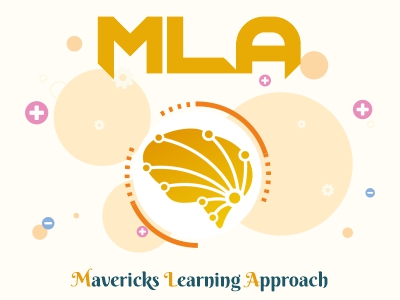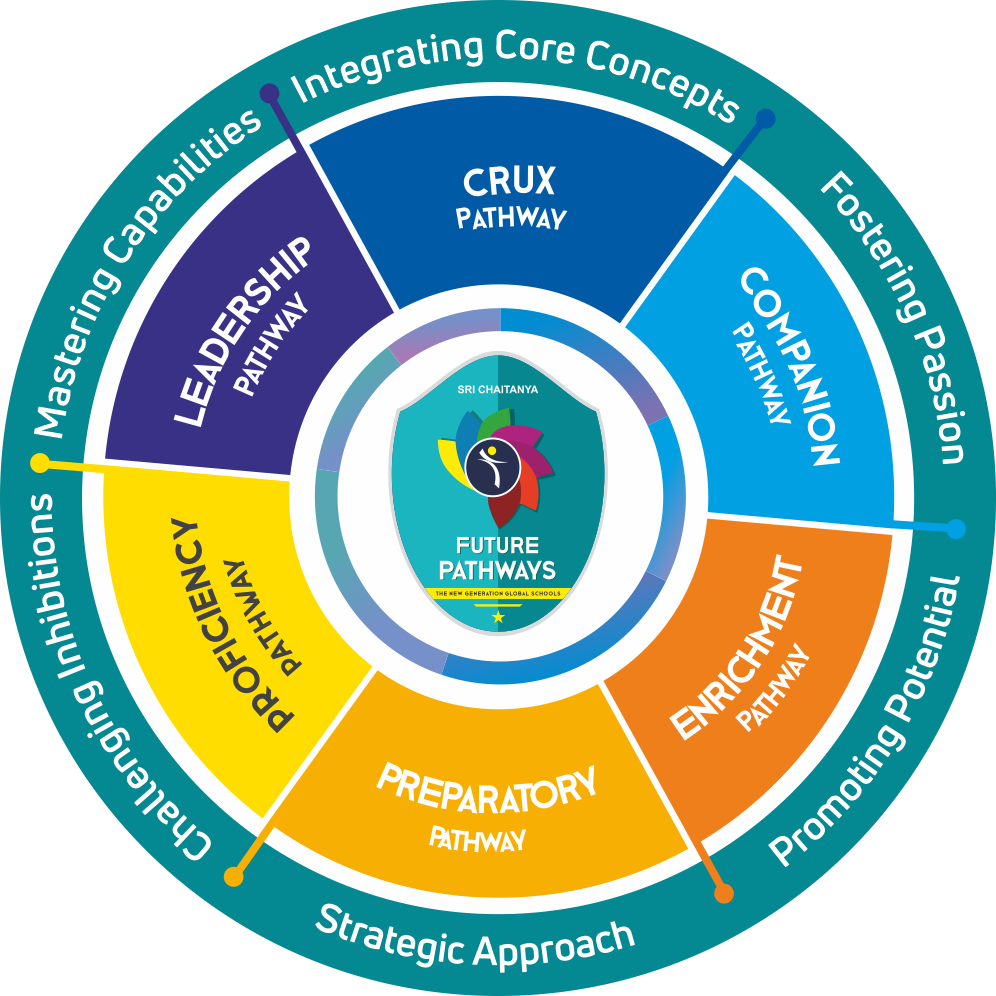
Our pedagogy determines the right learning approach - if we practice the same thing many times, this behaviour acts as the stimulus to activate the neurons in our brain to retrieve the information more efficiently at the time when it is needed. Thus the brain is rewired to store an untold amount of information.
The nature of our mavericks learning approach, where prior knowledge and the desired learning outcomes are where we carefully select, when and how to apply the approach for it to be successful by stimulating the curiosity of the child in an ecstatic process.
Viktor .E. Franklin, a renowned neurologist stated that “between stimulus and response there is a space. In that space is our power to choose our response. In our response lies our growth and our freedom.”
In that space, we strive to seep in knowledge and wisdom through the expansion and extension of the brain’s plasticity and neural pathways.

6C Learning Process
The six 6Cs are namely, Conception, Collaboration, Contrivance, Comprehension, Cognizance and Coherence. It is a step by step process of learning where learners are engaged in learning through 6 different techniques aligned in a way to achieve perfect coherent knowledge related to the topic.
Conception: The learners start to conceive the knowledge through activities or projects where they have to gather the information related to the topic. They have to research and question the previous knowledge, they have to structure this knowledge in form of answers or tables. This builds a foundation for further building on the knowledge related to that topic. All observations and answers are correct!
Collaboration: The process of building a learning foundation continues in the collaboration phase where the learners get a chance to broaden their knowledge spectrum with peer learning and support of facilitators. Here the learners have a chance to collect some information that they might have missed out on but was gathered by a peer. They can sit, discuss and exchange ideas. This way the foundation build by each learner is reinforced by their peers.
Contrivance: The facilitator strengthens the learning foundation by adding some concrete facts in the contrivance phase. This fact is a way to encourage the learners to be interested in the topic at hand. These facts are beyond the basic knowledge. It opens up wider doors to give a chance for the learners to explore beyond the books.
Comprehension: The comprehension phase is the formal learning phase where each learner has to go through the basic information to get the age-appropriate knowledge of the topic at hand. This can be done by using the course books as supplementary material while using activities, lectures, digital assets and reference books to compliment it. The information in the course books is presented in such ways as to permit the students to explore and expand more on it.
Cognizance: In the cognizance phase, each learner must present their knowledge on that topic in the form of a mind map. The students have freedom to use words, symbols, pictures, etc. to express their understanding. The facilitator may gauge the learners’ understanding levels based on the depth of the knowledge and the way it is structured. The mind-map reveals how much the learner has understood and if they are able to process, retrieve and present their knowledge in the right way.
Coherence: At the end the knowledge becomes coherent or a unified whole when the learner is able to formulate questions on the topic. The facilitator can help with the structure of a question but the learners get to choose the information on which questions are formed. Questions any be in any form – from our standard fill in the blanks and answer briefly to poster making, illustrations, comprehension-based questions, etc.
Outcomes
A method of teaching that is entirely student-centered will leave no room for pressure or stress. Joyful Learning approach is where learners are given opportunities to experience emotions of surprise in delightful ways, nurture their curiosity, while interacting with meaningful content through a supportive community of classmates / peer group and teachers.
MLA makes learning more efficient by using training methods that reflect this resulting in
- Measuring expertise and adapting your instruction accordingly.
- Reducing the problem space by breaking problems down into parts, and by using partially completed problems and worked examples.
- Merging together multiple sources of visual information whenever possible.
- Extending the capacity of working memory by using both visual and auditory channels.

Our Mavericks Learning approach helps students to
01.Absorb concepts Faster
Mavericks
boasts active learning
with
a broad range of Semantic Encoding that taps the cognitive area of your
child augmenting his
overall grasping capacity.
02.Comprehend Better
With various
techniques including
reading, visualizing, summarizing, etc., the Mavericks program augments
a child's ability to
perceive better and expand the ability of perception and comprehension.
03. Remember Longer
Various practices
with working memory
recommended by mavericks help consolidate long term memory enabling a
child to remember the
concept for long.
04. Retrieve Easier
Reviewing the
content learnt is called
the retrieval practice, which helps children to cement their learning
for long by practicing and
repeating. This practice is done effortlessly and help the student
retrieve the information from
his/her memory easily.
05. Apply Smarter
Mavericks advocates
'practicing the
application of learning', making it social and collaborative, developing
the required skills to
apply learning efficiently.
